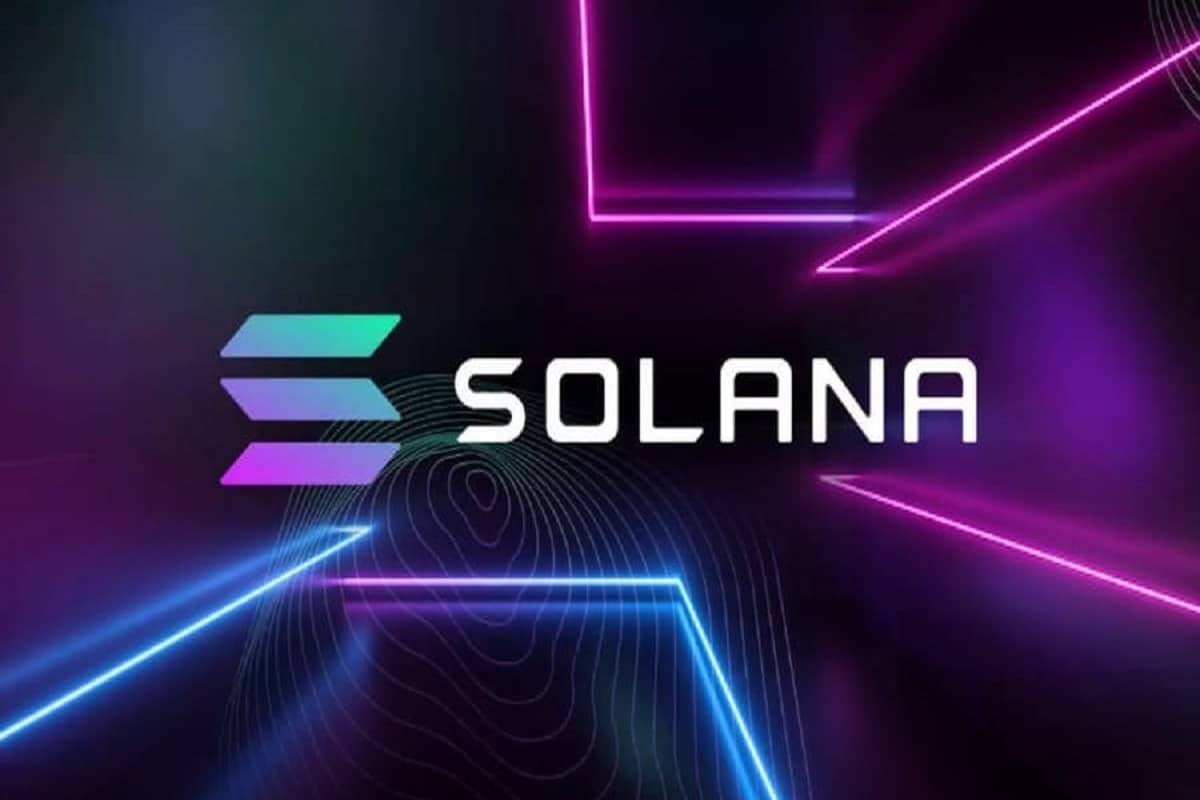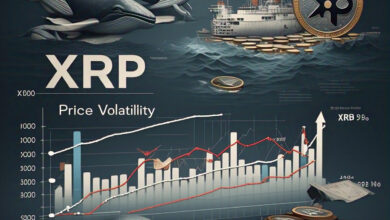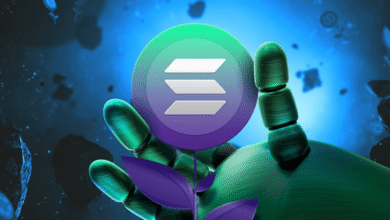Best Solana Trading Platform 2025 Top 10 Exchanges Reviewed & Compared

The cryptocurrency landscape has evolved dramatically, and finding the best Solana trading platform in 2025 has become crucial for both novice and experienced traders. Solana’s blazing-fast transaction speeds and minimal fees have made it one of the most sought-after blockchain networks for trading and DeFi activities. With the Solana ecosystem experiencing unprecedented growth, choosing the right trading platform can significantly impact your trading success and overall portfolio performance.
Whether you’re looking to trade SOL tokens, explore Solana-based DeFi protocols, or diversify your cryptocurrency holdings, selecting the optimal trading platform requires careful consideration of factors like security, fees, user experience, and available features. This comprehensive guide will walk you through the top Solana trading platforms available in 2025, helping you make an informed decision based on your specific trading needs and preferences.
What Makes Solana Special in 2025
Solana has established itself as a powerhouse in the cryptocurrency ecosystem, offering unparalleled transaction speeds of up to 65,000 transactions per second with average costs below $0.01. This efficiency has attracted countless developers and projects to build on the Solana network, creating a vibrant ecosystem of decentralized applications, NFT marketplaces, and DeFi protocols.
The network’s proof-of-history consensus mechanism, combined with proof-of-stake, provides both security and scalability that traditional blockchains struggle to achieve. For traders, this means faster execution times, lower costs, and access to innovative financial products that simply aren’t possible on congested networks.
Key Features to Look for in the Best Solana Trading Platform 2025
Security and Regulation
When evaluating any Solana trading platform, security should be your top priority. Look for platforms that employ industry-standard security measures, including two-factor authentication, cold storage for funds, and regulatory compliance in their operating jurisdictions. The best platforms often carry insurance coverage for digital assets and undergo regular security audits.
Trading Fees and Cost Structure
Fee structures can significantly impact your trading profitability, especially for active traders. The most competitive Solana trading platforms offer tiered fee structures that reward higher trading volumes with reduced costs. Consider both maker and taker fees, withdrawal fees, and any hidden costs that might affect your returns.
User Interface and Experience
A well-designed trading interface can make the difference between successful trades and costly mistakes. The best platforms balance advanced trading tools with an intuitive design, ensuring both beginners and professionals can navigate effectively. Mobile accessibility has also become essential for traders who need to monitor markets on the go.
Liquidity and Trading Pairs
High liquidity ensures you can execute trades quickly at fair market prices. Top Solana trading platforms typically offer extensive SOL trading pairs, including SOL/USD, SOL/BTC, and SOL/ETH, along with access to other Solana ecosystem tokens. Deep order books minimize slippage and improve trade execution quality.
Top Solana Trading Platforms for 2025
Binance: The Global Powerhouse
Binance remains one of the most comprehensive cryptocurrency exchanges globally, offering extensive Solana trading options. With some of the lowest fees in the industry (0.1% standard trading fee), advanced trading tools, and robust security measures, Binance caters to traders of all experience levels.
The platform provides multiple SOL trading pairs, futures trading, and staking options that allow users to earn passive income on their Solana holdings. Binance’s mobile app offers full functionality, making it convenient for traders who prefer mobile trading experiences.
Coinbase Pro: User-Friendly Excellence
Coinbase Pro has earned its reputation as one of the most user-friendly platforms for cryptocurrency trading. While fees are slightly higher than some competitors (0.5% for beginners), the platform excels in security, regulatory compliance, and customer support quality.
For newcomers to Solana trading, Coinbase Pro offers educational resources and a simplified interface that makes getting started straightforward. The platform’s insurance coverage and regulatory standing in the United States provide additional peace of mind for institutional and retail traders alike.
FTX US: Advanced Trading Features
FTX US provides sophisticated trading tools and competitive fee structures that appeal to serious traders. The platform offers advanced order types, leverage trading options, and comprehensive charting tools that professional traders require for technical analysis. The exchange’s integration with Solana’s ecosystem includes support for Solana-based tokens and participation in various DeFi protocols. FTX US also provides API access for algorithmic trading strategies.
Kraken: Security-First Approach
Kraken has built its reputation on security excellence and transparency. The platform offers competitive fees, extensive trading pairs, and has never suffered a major security breach in its operational history. For traders prioritizing security above all else, Kraken represents an excellent choice. The exchange provides detailed market analysis, educational content, and 24/7 customer support. Kraken’s staking services also allow SOL holders to earn rewards while maintaining their positions.
Decentralized Exchange Options for Solana Trading

Raydium: The Leading Solana DEX
Raydium stands out as the premier decentralized exchange built specifically on Solana. As an automated market maker (AMM), Raydium provides liquidity to the broader Solana ecosystem while offering users direct control over their funds.
The platform integrates with Serum’s order book system, providing both AMM and order book liquidity. Users can participate in yield farming, liquidity provision, and access to newly launched tokens through Raydium’s launchpad features.
Serum: Order Book Innovation
Serum pioneered the order book model on Solana, providing a more traditional trading experience within a decentralized framework. The platform offers limit orders, market orders, and advanced trading features typically found on centralized exchanges.
Professional traders appreciate Serum’s low latency and minimal slippage, making it suitable for larger trades and sophisticated trading strategies. The platform’s open-source nature has spawned numerous front-end interfaces, giving users multiple options for accessing Serum’s liquidity.
Orca: Simplified DeFi Trading
Orca focuses on providing a user-friendly decentralized trading experience with an emphasis on simplicity and efficiency. The platform’s concentrated liquidity model helps reduce slippage and improve capital efficiency for liquidity providers.
Orca’s clean interface and straightforward functionality make it an excellent choice for users new to decentralized trading. The platform supports various Solana ecosystem tokens and provides tools for yield farming and liquidity provision.
Mobile Trading Solutions for Solana
Phantom Wallet Integration
Many traders prefer using mobile wallets that integrate seamlessly with Solana DEXs. Phantom Wallet has emerged as the leading choice, offering built-in swap functionality and direct access to popular Solana DeFi protocols.
The wallet’s browser integration allows users to interact with web-based DEXs while maintaining control of their private keys. Phantom’s user-friendly interface and strong security features make it ideal for mobile Solana trading.
Trust Wallet Capabilities
Trust Wallet provides another excellent mobile option for Solana trading, with built-in DEX functionality and support for the broader Solana ecosystem. The wallet’s integration with various DeFi protocols allows users to trade, stake, and participate in yield farming directly from their mobile devices.
Trading Strategies for Solana Platforms
Dollar-Cost Averaging (DCA)
Many successful Solana investors employ dollar-cost averaging strategies to build their positions over time. This approach involves making regular purchases regardless of price fluctuations, helping to smooth out volatility and reduce the impact of market timing decisions.
Most major trading platforms support automated DCA features, allowing users to set up recurring purchases that execute automatically. This strategy works particularly well for long-term Solana believers who want to accumulate SOL without the stress of timing the market.
Swing Trading Techniques
Solana’s price volatility creates opportunities for swing traders who can capitalize on medium-term price movements. Successful swing trading requires understanding technical analysis, market sentiment, and the specific factors that drive Solana’s price action.
Key indicators for Solana swing trading include trading volume, network activity metrics, developer adoption rates, and broader cryptocurrency market trends. The best trading platforms provide comprehensive charting tools and technical indicators to support these strategies.
Arbitrage Opportunities
The multiple trading venues for Solana create arbitrage opportunities for sophisticated traders. Price differences between centralized and decentralized exchanges, or between different DEXs, can be exploited for profit using automated trading strategies.
However, arbitrage trading requires significant technical knowledge, fast execution capabilities, and careful attention to transaction costs and slippage. Only experienced traders should attempt arbitrage strategies, and success often depends on having access to advanced trading tools and low-latency connections.
Security Best Practices for Solana Trading

Wallet Security Fundamentals
Protecting your Solana holdings starts with proper wallet security. Never store large amounts on exchange platforms, and always use hardware wallets for long-term storage. Popular hardware wallet options that support Solana include Ledger and Trezor devices.
For active trading, consider using separate wallets for different purposes: a hardware wallet for long-term holdings, a software wallet for DeFi activities, and minimal amounts on exchanges for active trading. This approach minimizes risk while maintaining trading flexibility.
Platform Security Assessment
Before committing funds to any trading platform, research their security track record, insurance coverage, and compliance status. Look for platforms that publish security audit results and maintain transparent communication about their security practices.
Two-factor authentication should be mandatory on all accounts, and consider using unique, strong passwords for each platform. Many traders also use VPNs to add a layer of security when accessing trading platforms.
Fee Comparison and Cost Optimization
Understanding Fee Structures
Different platforms employ various fee models that can significantly impact your trading costs. Maker fees typically apply when you add liquidity to the order book, while taker fees apply when you remove liquidity. Many platforms offer reduced fees for users who hold their native tokens or achieve higher trading volumes.
For frequent traders, fee optimization becomes crucial for maintaining profitability. Some platforms offer fee discounts for users who pay fees using their native tokens, while others provide volume-based tier systems that reduce costs as trading activity increases.
Hidden Costs to Consider
Beyond obvious trading fees, consider withdrawal fees, deposit fees, and currency conversion costs. Some platforms charge fixed withdrawal fees regardless of amount, while others use percentage-based fees. For international users, currency conversion spreads can add significant costs to fiat transactions. Network fees for Solana transactions are typically minimal (under $0.01), but during network congestion, priority fees might be necessary for faster transaction confirmation. Factor these costs into your overall trading strategy.
Advanced Trading Features and Tools
Margin and Leverage Trading
Several platforms offer margin trading capabilities for Solana, allowing traders to amplify their positions using borrowed funds. While leverage can increase potential profits, it also magnifies risks and requires sophisticated risk management strategies.
Platforms that offer Solana margin trading typically provide various leverage ratios, from conservative 2:1 options to more aggressive 10:1 or higher. Always understand the liquidation mechanics and maintain appropriate position sizing when using leverage.
API Access and Algorithmic Trading
Professional traders often require API access for implementing automated trading strategies. The best platforms provide comprehensive APIs with real-time market data, order management capabilities, and account information access.
Popular programming languages for Solana trading bots include Python and JavaScript, with numerous libraries available for interfacing with different exchange APIs. Consider rate limits, API costs, and documentation quality when evaluating platforms for algorithmic trading.
Advanced Order Types
Stop-loss orders, take-profit orders, and trailing stops help traders manage risk and automate position management. Some platforms also offer more sophisticated order types like iceberg orders, time-weighted average price (TWAP) orders, and bracket orders.
These advanced features become particularly valuable during volatile market conditions when manual order management becomes challenging. Look for platforms that offer the specific order types that align with your trading strategy.
Solana Ecosystem Integration
DeFi Protocol Access
The best Solana trading platforms often provide direct integration with popular DeFi protocols, allowing users to participate in yield farming, lending, and other DeFi activities without leaving the platform. This integration can include access to platforms like Marinade Finance for liquid staking or Mango Markets for advanced trading.
These integrations can provide additional earning opportunities beyond simple trading, helping users maximize the utility of their Solana holdings. However, always understand the risks associated with DeFi protocols before participating.
NFT Trading Capabilities
Solana’s NFT ecosystem has exploded in popularity, and some trading platforms now offer integrated NFT trading capabilities. This feature allows users to trade both fungible and non-fungible tokens from a single interface, streamlining the overall trading experience. Popular Solana NFT marketplaces include Magic Eden and Solanart, and some centralized exchanges are beginning to integrate these services directly into their platforms.
Geographic Considerations and Regulatory Compliance
Regional Availability
Platform availability varies significantly by region due to regulatory requirements and licensing restrictions. US-based traders must use compliant platforms like Coinbase Pro or Kraken, while European traders have access to additional options like Bitstamp or Bitpanda. Always verify that your chosen platform operates legally in your jurisdiction and complies with local regulations. Using non-compliant platforms can result in account closure and potential legal complications.
Tax Reporting and Compliance
Many jurisdictions require detailed reporting of cryptocurrency trading activities for tax purposes. The best trading platforms provide comprehensive transaction histories and tax reporting tools that simplify compliance requirements.
Some platforms integrate with popular tax software like CoinTracker or Koinly, automatically importing transaction data and calculating tax obligations. This integration can save significant time and reduce errors in tax reporting.
Future Trends in Solana Trading
Institutional Adoption
Institutional interest in Solana continues growing, with major financial institutions exploring Solana-based products and services. This trend typically leads to increased liquidity, more sophisticated trading tools, and enhanced regulatory clarity. The development of institutional-grade custody solutions and compliance tools makes Solana more accessible to traditional financial institutions, potentially driving significant capital inflows to the ecosystem.
Cross-Chain Integration
As blockchain interoperability improves, expect to see enhanced cross-chain trading capabilities that allow seamless trading between Solana and other blockchain networks. This development could significantly expand trading opportunities and liquidity options. Projects working on cross-chain bridges and atomic swaps are making it easier to move assets between different blockchain networks, potentially reducing the importance of specific platform choices.
Risk Management for Solana Trading
Portfolio Diversification
While Solana offers excellent trading opportunities, maintaining a diversified cryptocurrency portfolio remains essential for risk management. The best trading platforms typically offer access to multiple cryptocurrencies, allowing users to maintain balanced portfolios.
Consider allocating only a portion of your total cryptocurrency holdings to Solana, regardless of your confidence in the network’s prospects. Diversification helps protect against unforeseen events that could impact any single cryptocurrency or blockchain network.
Market Volatility Preparation
Cryptocurrency markets, including Solana, can experience extreme volatility. Successful traders prepare for these conditions by setting appropriate stop-loss orders, maintaining emergency liquidity, and avoiding emotional decision-making during market turbulence. The best trading platforms provide tools like price alerts, volatility indicators, and risk management features that help traders navigate challenging market conditions more effectively.
Customer Support and Educational Resources
Support Quality Assessment
Reliable customer support becomes crucial when dealing with technical issues or account problems. Evaluate platforms based on their response times, support channel availability (live chat, email, phone), and the quality of their support documentation.
Look for platforms that provide multilingual support if English isn’t your primary language, and consider the availability of support during your typical trading hours, especially if you’re located in a different time zone from the platform’s primary operations.
Learning and Development Resources
The cryptocurrency space evolves rapidly, and the best platforms invest in educational content that helps users stay informed about market developments, trading strategies, and platform features. Look for platforms that offer webinars, trading guides, market analysis, and tutorial content. Some platforms also provide demo trading environments where users can practice strategies without risking real funds. These features can be particularly valuable for traders new to Solana or cryptocurrency trading in general.
Platform Comparison Matrix
When evaluating different Solana trading platforms, consider creating a comparison matrix that includes factors most important to your trading style. Key comparison points include trading fees, security features, available cryptocurrencies, customer support quality, regulatory compliance, and special features like staking or DeFi integration.
Remember that the “best” platform varies depending on individual needs. A day trader might prioritize low fees and advanced charting tools, while a long-term investor might value security features and staking capabilities more highly.
Getting Started with Solana Trading
Account Setup and Verification
Most reputable trading platforms require identity verification to comply with anti-money laundering (AML) and know-your-customer (KYC) regulations. Prepare necessary documentation, including government-issued identification, proof of address, and potentially financial information, depending on the platform’s requirements.
The verification process can take anywhere from minutes to several days, so plan accordingly if you need to start trading by a specific deadline. Some platforms offer limited functionality before full verification, allowing you to explore the interface while your documents are being processed.
Funding Your Trading Account
Consider the various funding methods available on your chosen platform. Bank transfers typically offer the lowest fees but may take several days to process. Credit card deposits are faster but often carry higher fees. Some platforms also accept.
Cryptocurrency deposits, which can be convenient if you’re transferring funds from another exchange. Pay attention to minimum deposit requirements and any fees associated with different funding methods. Plan your initial deposit size based on your trading strategy and the platform’s minimum trading amounts.
Solana Trading Platform Recommendations by User Type
Best for Beginners
New traders should prioritize platforms with excellent educational resources, intuitive interfaces, and strong customer support. Coinbase Pro often ranks highly for beginners due to its user-friendly design and comprehensive educational content, despite slightly higher fees.
Consider starting with smaller amounts while learning the platform’s features and developing your trading strategy. Many successful traders recommend practicing with demo accounts or very small real positions before committing significant capital.
Best for Advanced Traders
Experienced traders typically require sophisticated charting tools, advanced order types, and API access for automated strategies. Platforms like Binance and FTX US excel in providing professional-grade trading tools and features. Advanced traders should also consider platforms that offer extensive technical analysis tools, multiple chart types, and integration with external trading software or portfolio management tools.
Best for DeFi Enthusiasts
Traders interested in decentralized finance should consider platforms that integrate well with Solana’s DeFi ecosystem. Decentralized exchanges like Raydium and Serum provide direct access to DeFi protocols while maintaining the benefits of decentralized trading. These platforms typically require more technical knowledge but offer greater control over funds and access to innovative financial products not available on centralized exchanges.
Technical Analysis Tools and Resources
Charting Capabilities
Comprehensive charting tools are essential for technical analysis and informed trading decisions. The best platforms provide multiple timeframes, various chart types (candlestick, line, bar), and extensive technical indicator libraries.
Popular technical indicators for Solana trading include moving averages, RSI, MACD, Bollinger Bands, and Fibonacci retracements. Some platforms also offer custom indicator creation capabilities for traders who develop their analysis methods.
Market Data and Analytics
Real-time market data, order book depth, and trading volume information help traders make informed decisions. Premium platforms often provide additional analytics like market sentiment indicators, social media sentiment analysis, and on-chain metrics specific to Solana.
Consider platforms that offer historical data access, as backtesting trading strategies can significantly improve long-term performance. Some exchanges also provide research reports and market analysis from their trading teams.
Also Read: Solana Smart Contracts Explained: Complete Guide to Building on Solana Blockchain
Conclusion
Selecting the best Solana trading platform 2025 depends on your individual trading needs, experience level, and risk tolerance. For beginners, prioritizing security and ease of use, Coinbase Pro offers an excellent starting point with comprehensive educational resources and strong regulatory compliance.
Advanced traders seeking sophisticated tools and competitive fees might prefer Binance or FTX US, which provide professional-grade features and extensive trading options. DeFi enthusiasts should explore decentralized options like Raydium and Serum for maximum control and access to innovative financial products.
Regardless of your choice, remember that successful Solana trading requires ongoing education, careful risk management, and staying informed about ecosystem developments. Start with smaller amounts, develop your trading strategy gradually, and always prioritize security over convenience.




